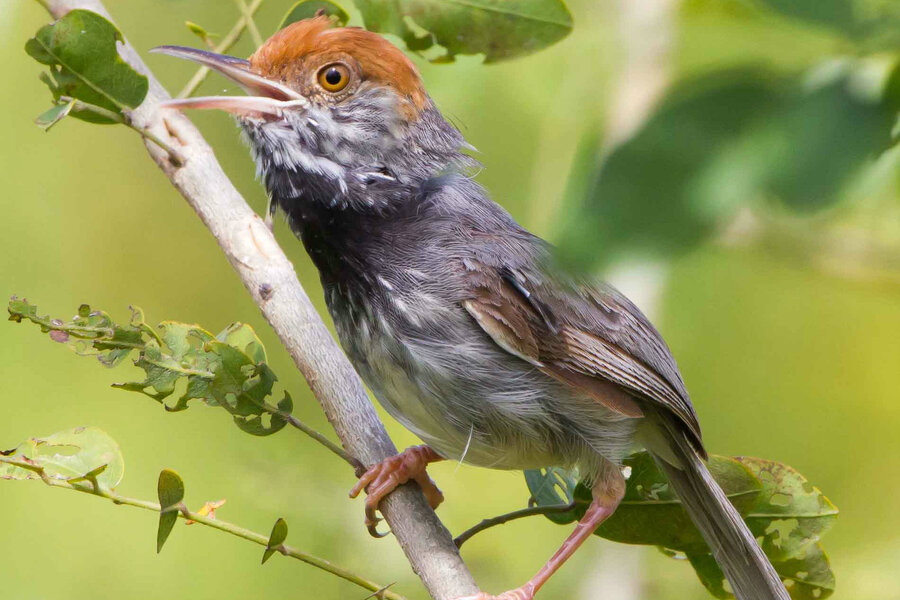New Cambodian tailorbird is an unlikely bird, in an unlikely place
It's easy to get lost in the big city.
Scientists have discovered a new bird hiding in Cambodia’s booming, urban capital.
Called the Cambodian tailorbird (Orthotomus chaktomuk), the previously undocumented bird was found in Phnom Penh, as well as at several locations, including a construction site, outside the teeming city. The name "chaktomuk" translates from Khmer to “four-faces,” in reference to the three rivers – Tonle Sap, Mekong, and Bassac Rivers – that converge to divide Phnom Penh into four zones.
“The modern discovery of an un-described bird species within the limits of a large populous city – not to mention 30 minutes from my home – is extraordinary,” said Simon Mahood, of the Wildlife Conservation Society. “The discovery indicates that new species of birds may still be found in familiar and unexpected locations.”
Described in the Oriental Bird Club’s journal Forktail, the small gray bird has an orange-topped head – like a baseball cap painted on and pulled low over its eyes – and a white and black throat. It was identified after Mahood began investigating an unidentified bird pictured in his co-author Ashish John's photographs taken at a construction site on the outskirts of Phnom Penh.
While it’s rare for a bird to be discovered in a major city, as opposed to in Cambodia’s jungles in its far-flung provinces, Phnom Penh is not an entirely unlikely home for the bird, which lives in the humid scrub in the river-girdled capital’s floodplain. The bird's territory is also not exactly in the capital itself, but more in the outskirts, where the urban landscape transitions into a hodgepodge of farmlands, factories, and construction zones.
Still, as development booms and Phnom Penh widens, the bird’s habitat is in decline. The paper’s authors recommend that it be classified as "Near Threatened" under the International Union for Conservation of Nature’s Red List. The newly discovered bird’s homeland is already part of the Baray Bengal Florican Conservation Area, where the Wildlife Conservation Society is at work with local communities and the nation’s Forestry Administration to protect the Bengal florican and other threatened birds.
The tailorbird is one of only two bird species found only in Cambodia. The other, the Cambodian laughingthrush, is seen just in the Cardamom Mountains, in Cambodia’s southwestern corner.
Bird discoveries have boomed in Southeast Asia in recent years, though most of those findings are coming as scientists plunge into the region's unexplored, remote jungles and less so from those countries' dense capitals. Among the newly documented species are various babbler birds from Vietnam’s mountains, the bare-faced bulbul from Laos, and the Mekong river’s wagtail.






